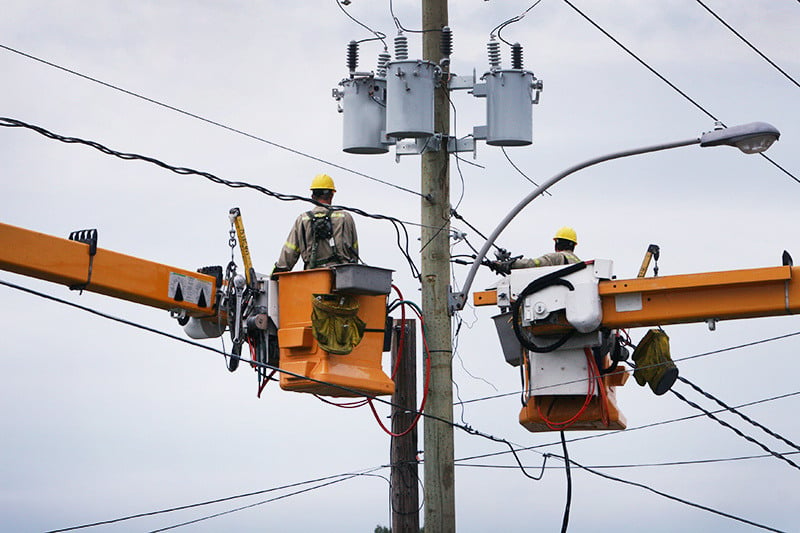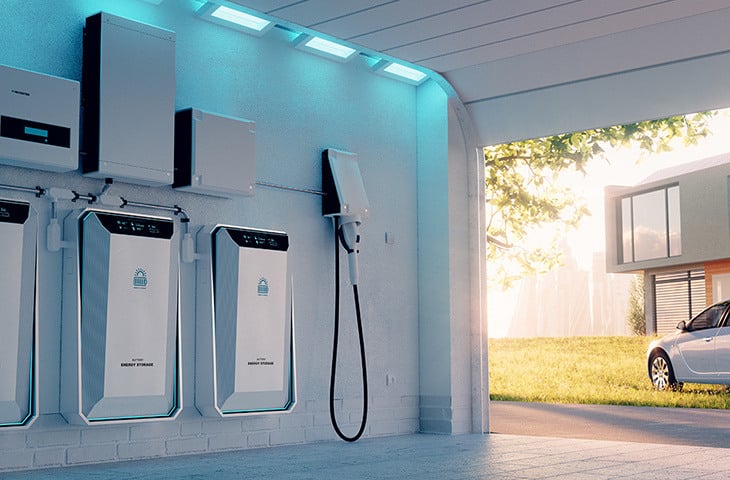Glossary of Solar Lingo
 by EverBright's Solar Expert
by EverBright's Solar Expert

Switching to solar energy could be a great way for you to save on electricity bills and help the environment. However, understanding how it all works can be confusing because of so much unfamiliar terminology. This glossary explains the key terms and concepts you need to know to navigate your solar journey confidently.
Glossary of Solar Lingo
Battery Storage: Systems that store the electricity generated by solar panels for later use, providing energy during nighttime or cloudy days.
Buydown Payment: For Retail Installment Contracts (RICs), where you own the solar system, a buydown payment is a lump sum payment made by the 18th month of the contract to keep your monthly payment amounts the same for the remainder of the solar financing agreement.
Consumption: The amount of electricity you use, measured in kilowatt-hours (kWh).
Energy Offset: The percentage of your total electricity use that is supplied by your solar power system. The higher the offset, the more your solar system supports your home’s total energy needs, potentially reducing your utility bill.
Grid-Tied System: Most solar power systems are connected to the electrical grid. This allows you to use utility power when your solar system is not producing enough electricity to support your needs, and to potentially sell excess power back to the grid.
In-Service Date: The date on which your solar system is officially turned on and begins generating electricity. This date is usually after final inspections and obtaining Permission to Operate (PTO) from your utility company.
Inverter: A key component of a solar power system that converts the direct current (DC) electricity produced by the solar panels into alternating current (AC) electricity, which is used in US homes.
Investment Tax Credit (ITC): A federal incentive that may allow the owner of a clean energy system, including solar, to deduct a percentage of their solar energy system cost from their taxes.
Kilowatt (kW): A measure of power equal to 1,000 watts. Solar panel system sizes are typically measured in kilowatts.
Kilowatt-Hour (kWh): A measure of energy usage over time representing the consumption of one kilowatt of power over the span of one hour.
Modules: Also known as solar panels, a module is a single photovoltaic panel that is an assembly of connected solar cells. The solar cells absorb sunlight as a source of energy to generate electricity. An array of these modules can be used to supply power to homes and businesses.
Net Metering: Also referred to as Net Energy Metering (NEM), this billing mechanism credits solar energy system owners for the electricity they add to the grid. If the home generates more electricity than it uses, the excess can be sent to the grid and credited for later use.
Photovoltaic (PV): Technology that converts sunlight directly into electricity using solar cells. Single PV panels, also called modules, are comprised of multiple connected solar cells.
Power Purchase Agreement (PPA): A contractual agreement between energy buyers and sellers to buy and sell energy at a set rate for a period of time. With a residential solar PPA, since the homeowner does not own the installed solar system, EverBright (as the system owner) bears the high upfront cost of solar panels, equipment, and installation. Homeowners pay a set rate per kWh per year, plus an annual rate escalator, or increase, for the electricity the solar panels generate. EverBright also bears the cost of most operations and maintenance needs.
Production: The amount of electricity generated by a solar power system, typically measured in kilowatt-hours (kWh). Production can be affected by many things, including weather, seasons, shading, and dirt.
PTO (Permission to Operate): The authorization granted by your utility company allowing you to connect your solar power system to the grid and start generating and using solar energy.
Rate Escalator: A term used in solar financing agreements, such as leases or PPAs, to describe the annual increase in the price a homeowner pays for electricity or the solar lease. This rate increase is typically a fixed percentage and is accounted for over the duration of the agreement. This will be clearly articulated in your contract.
Retail Installment Contract (RIC): RICs are a way to finance the purchase of a solar system. Homeowners who opt for RIC financing own the solar equipment installed on their home. As the owner, they are responsible for all system maintenance but may also be eligible for solar tax credits and/or other financial incentives.
Shade Analysis: An assessment that determines the impact of shading on the performance of a solar power system, helping to optimize system placement and maximize energy production.
Solar Lease: Instead of purchasing the solar equipment, with a lease, you pay a pre-defined monthly payment in return for use of the system and the electricity the solar panels generate.
Solar Panels: Glass devices made of photovoltaic (PV) cells that capture and convert sunlight into direct current (DC) electricity.
The Bottom Line
Recommended Posts

HOMEOWNERS
Why solar alone doesn’t work during an outage
Your solar panels are soaking up the rays, but the power goes out—and so does your solar system. Let's explore why this happens.
HOMEOWNERS
What are the benefits of solar batteries?
Ready to take your solar energy game to the next level? Here's how batteries can unlock additional value when tied to your solar system.



